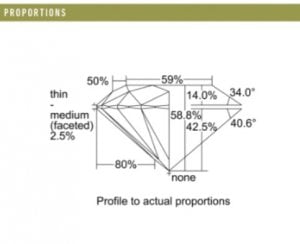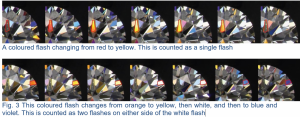- Joined
- Jul 27, 2009
- Messages
- 4,111
David,
You are introducing confusion into the topic in a several ways. You are presenting a false-choice argument by suggesting that to make a fiery diamond you have to sacrifice scintillation.
What do you mean by "the 60/60 80lgf 'scintillation' stone"? What is your method for assessing scintillation? Are you suggesting that a fiery ideal cut cannot also have great scintillation?
Your last line suggests a sort of 2 for one exchange, as though if you want fire you have to give up scintillation and spread!
Lastly you talk as if there is a profound difference in spread, whereas in a 1ct stone the difference between most ideal cuts and most spready 60/60s would only be one tenth of a millimeter.
You are introducing confusion into the topic in a several ways. You are presenting a false-choice argument by suggesting that to make a fiery diamond you have to sacrifice scintillation.
What do you mean by "the 60/60 80lgf 'scintillation' stone"? What is your method for assessing scintillation? Are you suggesting that a fiery ideal cut cannot also have great scintillation?
Your last line suggests a sort of 2 for one exchange, as though if you want fire you have to give up scintillation and spread!
Lastly you talk as if there is a profound difference in spread, whereas in a 1ct stone the difference between most ideal cuts and most spready 60/60s would only be one tenth of a millimeter.





300x240.png)